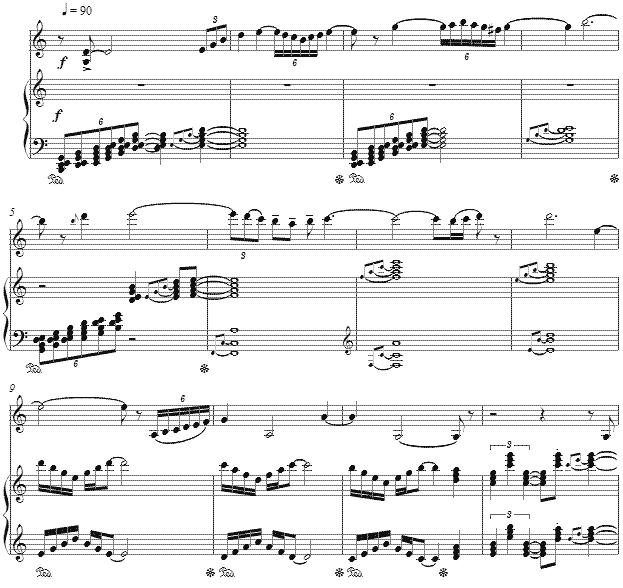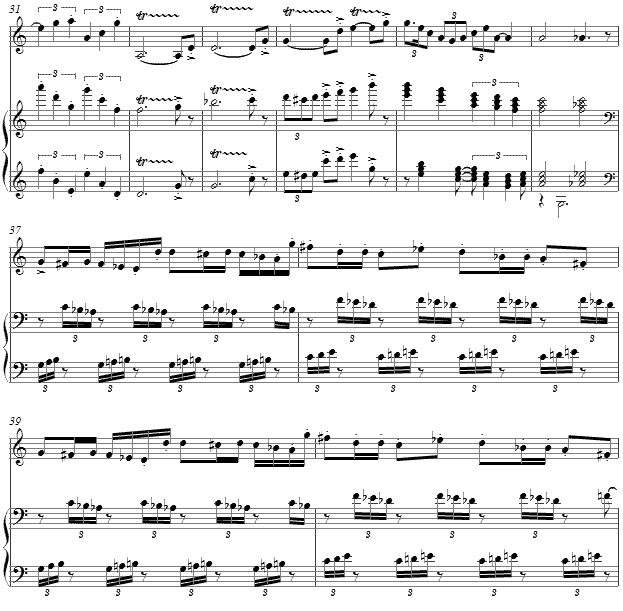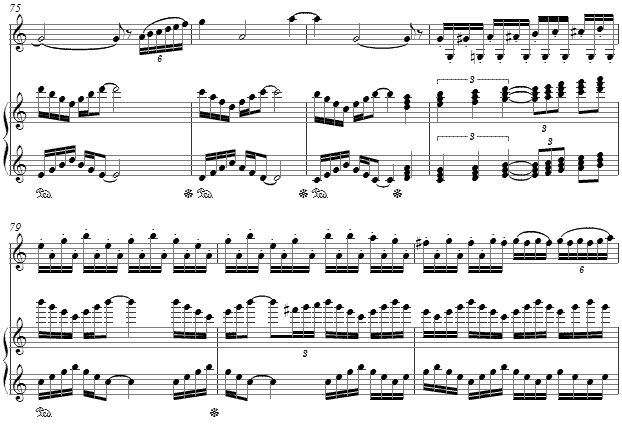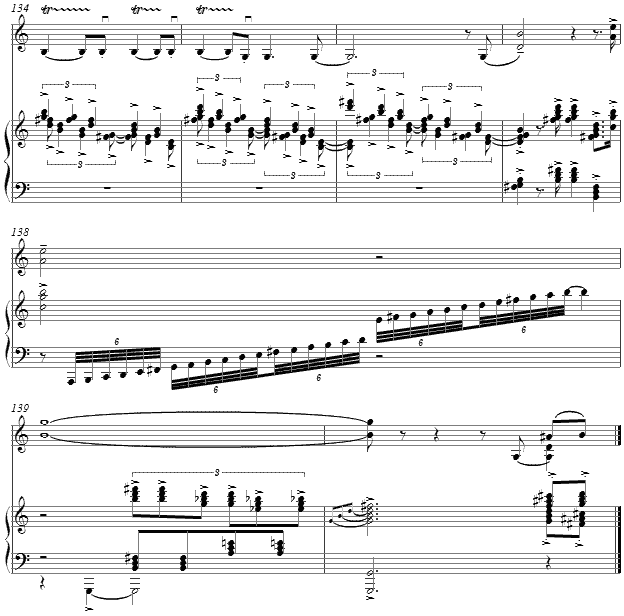Music and Texts of GARY BACHLUND
Vocal Music | Piano | Organ | Chamber Music | Orchestral | Articles and Commentary | Poems and Stories | Miscellany | FAQs
Le violoniste vert - (2009)
for violin and piano
Marc Chagall
When working in New York City over several seasons, I spent some time with a coach in whose Metropolitan studio there was lithograph of Chagall's Le violoniste vert, 1923-24. This "Green Violinist" oil-on-canvas painting of about 78 x 42 3/4 inches is housed at the Solomon R. Guggenheim Museum, New York. The image has remained with me, both in first seeing it in lithograph and then the lustrous, full-sized original which I visited on many occasions. Chagall was born in Russia, named Moishe Shagal in English characters, though the Yiddish and Cyrillic alphabets would have been original. Shagal is a northeast Yiddish version of Segal, and the name we know today is a transliteration of this earlier spelling. As to the violinist, he was a significant figure in the shetl -- a village -- life of White Russia. Chagall chose the subject several times beyond this Cubist-affected painting, a green faced musician with a purple coat above a landscape of sepia and gray and off white.
To capture the various reflections of this painting, the work opens with broad arches of the same four-note chord over which a florid violin rises and soars. Wholly diatonic, it is set apart from later scales with their augment seconds which one often associated with music of the Ashkenazi musical traditions. A few triadic harmonies linger over many measures as the violin essays lines above. The score is intentionally under-marked with forte only to remind at each section to reset the dynamics; interpreters may feel free to alter as they see fit for the instruments and venue.
The major diatonic mood is broken rhythmically with a succession of trills as as second section sings out a dance-like melody in the "fiddle" featuring a scale with two augmented seconds, one between the third and fourth of the scale and one between the sixth and seventh of the scale. Given a number of names, this scale is most often associated with Hungarian gypsy music as well as some forms of klezmer. The accompaniment is a simple, repetitive wash of ascending major and descending minor gestures.
The return in a rondo-like fashion brings the opening gesture back, with small changes in an ongoing development, after which a series of dance motives using a lower open string against the rising upper "voice" in the violin invites a flavor of chromatics in against the diatonic accompaniment, the two then joining into a spiccato-like, brittle moment leading to a cadence point.
The return of the Ashkenazi motive is now on E minor, compared to previous appearances G minor and G minor, the D sharp-E flat fulcrum acting between the tonal regions to further the harmonic development.
The coda to the piece revisits the arppegiation of the single, four note chord against the insistent trills of the violin, with a final, polytonal brushstroke before the final chords and resolution into what proves to be G major, though no key signature is used for the many regions into which this short work fall.
[ 11 pages in score, circa 6' 15" ]
The score for Le violoniste vert is available as a free PDF download, though any major commercial performance or recording of the work is prohibited without prior arrangement with the composer. Click on the graphic below for this piano-vocal score.





